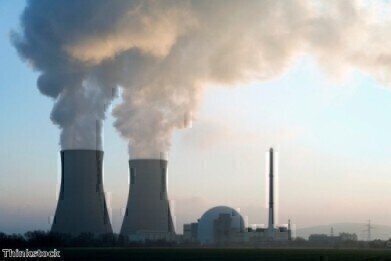Air Clean Up
How Much Pollution Comes from Funerals?
Feb 07 2020
An alarming new report from funeral industry magazine Pharos has revealed that the pollution produced by cremation may be comparable to driving the length of Britain in a car twice over. This is due to the type of material from which the coffins are constructed and the elevated levels of nitrogen oxides (NOx) which are produced when it is burnt.
Cremation has become an increasingly popular choice in recent years. 50 years ago, it accounted for around 51% of all funerals, but these days that percentage has skyrocketed to 78%. However, very little thought is given to the environmental ramifications of death, especially one in which cremation is favoured as a means of disposing of the mortal remains, and eco-activists are calling for the government to tighten up legislation surrounding sustainable practices in the industry.
Unregulated industry
It’s estimated that as many as 95% of all coffins used in cremations are manufactured using either MDF or chipboard, both of which release dangerous amounts of NOx into the air when combusted. Indeed, the Pharos investigation claims that a single cremation produces an equivalent amount of NOx as one car driving 2,280 miles (over two-and-a-half times the length of the UK) or 3,650 different cars driving past the crematorium during the service.
Placed in that context, the polluting consequences of cremations suddenly become quite troubling. Fortunately, the fact that we have made great strides in measuring and managing NOx gas emissions means that we already possess the technology needed to mitigate that damage. NOx filters are efficient at removing the majority of NOx from a crematorium’s emissions, but they are not cheap to purchase at approximately £30,000 for one unit.
That outlay, coupled with the fact that installation of such a filter is not yet a legal requirement, means that very few crematoriums in the UK currently employ one. Indeed, according to a Freedom of Information request submitted by Newsquest, less than 10% of the 198 public crematoriums in the country have a NOx filter.
Conflicting opinions
While environmentalists are clamouring for the government to introduce laws which would make a NOx comparable to a seat belt in cars or a catalytic converter for their exhausts, others believe that the findings of the Pharos article are a little overblown. In particular, they draw attention to the fact that crematoriums are generally located at a further remove from human habitation than passing cars, as well as the fact that exhaust fumes are emitted at a lower level (and thus more easily inhalable) than those from a crematorium chimney.
Elsewhere, other commentators have sought to drag the conversation back towards the government, claiming it is their responsibility to put forward a robust plan to tackle air pollution in all its forms. “It’s far more effective to think about the impact we make now rather than when we die,” asserted John Ranford, a member of the Swinford branch of protest group Extinction Rebellion.
“If we want to be cremated, I think that those things have a much smaller impact compared to the impact that the government makes,” he went on. “The government are the ones who need to make sacrifices, we’re going to see the climate catastrophe before we know it.”
Events
May 05 2024 Seville, Spain
May 13 2024 Munich, Germany
May 23 2024 Beijing, China
May 23 2024 Beijing, China
Jun 10 2024 Algiers, Algeria














